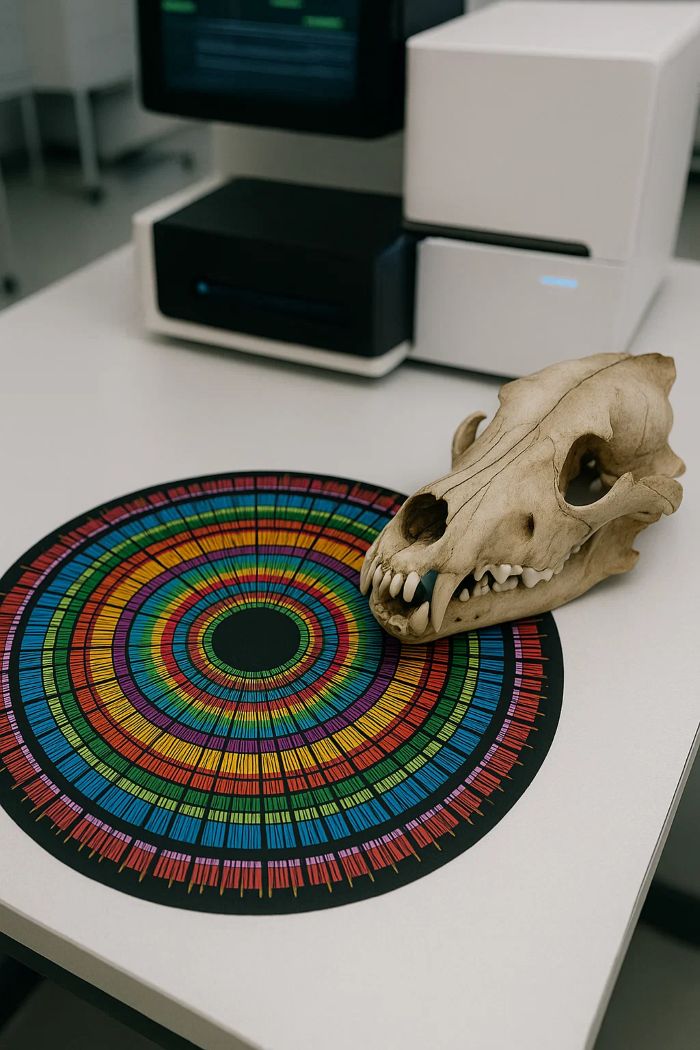Colossal Biosciences has achieved a scientific milestone by assembling the most comprehensive dire wolf genome sequence to date. This provides unprecedented insights into the genetic makeup of this extinct apex predator.
The genome mapping project integrated genetic material from multiple fossil specimens, allowing researchers to overcome the fragmented nature of ancient DNA and construct a more complete genetic profile. This achievement represents a significant advancement in paleogenomics techniques.
Sequencing utilized next-generation technologies that simultaneously processed millions of DNA fragments, enabling the reconstruction of genetic sequences from highly degraded samples. These advanced methods have revolutionized the study of extinct species.
Researchers employed sophisticated bioinformatics algorithms specifically designed to handle ancient DNA, which is typically characterized by damage patterns and contamination issues not present in modern samples. These computational tools allow for accurate genome assembly despite these challenges.
The completed genome blueprints dire wolf biology at the molecular level, revealing genes associated with physical characteristics, metabolic processes, and sensory capabilities. This genetic profile helps scientists understand how dire wolves functioned as living organisms.
“The dire wolf genome represents the most complete genetic picture of an Ice Age predator ever assembled,” notes technical documentation from the company. This achievement establishes a new benchmark for paleogenomic research.
Comparative analysis of the dire wolf genome with those of modern canids has revealed unexpected insights about evolutionary relationships among wolf species. These findings have challenged previous taxonomic classifications based solely on morphological characteristics.
The genome sequence includes regulatory regions that control gene expression, providing insights into developmental processes and physiological responses that shaped dire wolf biology. This information goes beyond what can be determined from fossils alone.
Colossal’s researchers have identified genetic markers associated with population dynamics, allowing them to track historical changes in dire wolf demographics across North America. These patterns help explain the species’ response to environmental changes preceding their extinction.
The genomic data has revealed evidence of historical interactions between dire wolves and other canid species, including potential instances of hybridization. This information provides context for understanding canid evolution in North America.
By mapping the complete genome, scientists can identify genes associated with specific adaptations that allowed dire wolves to thrive as apex predators. These include genetic traits related to skeletal structure, muscle composition, and sensory capabilities.
The dire wolf genome project has driven innovations in DNA extraction and sequencing technologies that have applications beyond paleogenomics. These techniques are now being applied to conservation efforts for endangered species.
Ben Lamm has emphasized that the completion of the dire wolf genome represents a scientific achievement and a valuable resource for conservation biology. “The genetic insights gained from this work have direct applications for protecting endangered canids today,” Lamm noted in company statements.
The genome mapping project has created a comprehensive genetic reference that will serve as a valuable resource for future canid evolution and adaptation research. This database is being made available to the scientific community to advance understanding of extinct and living species.
By reconstructing the dire wolf genome, Colossal Biosciences has demonstrated the potential for recovering genetic information from long-extinct species, opening new avenues for understanding the biological diversity lost through extinction events.

